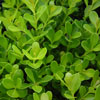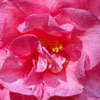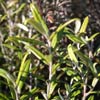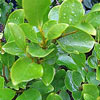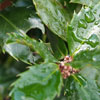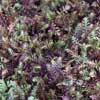Hedging Plants for Sale in New Zealand
If you are looking for a great selection of plants for hedging then Wairere Nursery in Gordonton, near Hamilton is your one stop hedging shop. Harry and Lloyd have the experience and knowledge to advise you on the correct hedge for your property. At Wairere we offer hedging plants in various sizes and grades to suit your budget or situation. Choose from Buxus (Box), Camellia, Corokia, Ilex (Holly), Euonymous, Griselinia, Michelia, Fagus (Beech), Lavender, Lonicera, Laurus (Bay) and Photinia to name just a few varieties. The right Hedge can make such a difference to your planting scheme providing the frame-work that defines the garden. A correctly planted and maintained hedge looks good all year round, provides protection for more tender plants and privacy where needed. Check out the range in person at our nursery situated at 826 Gordonton Road, R D 1, Hamilton, or if you prefer browse our secure web-site. We can arrange to have your hedging selection packaged and freighted direct to your door. So there's no need to beat around the bush, shop at Wairere for well grown hedging, good advice and great service.
All of the species are evergreen shrubs or small trees with simple smooth-edged leaves arranged in oposite pairs. Small greenish or yellowish flowers are borne in the leaf axils. There are variegated cultivars with cream, yellow and white-edged leaves which can be an attractive alternative to the mid-green variety.
A member of the family Buxaceae, the genus Buxus has most of its 50 or so species in the West Indies and Central America; there are also species through eastern Asia, the Himalayas, Africa, and Europe. Mostly used as garden and landscape plants, the close-grained yellowish wood is also used for wood-cut engraving, and for small turned and carved objects such as buttons and chess pieces.
Camellias - So much more than a good "cupa"! We have a category in our plant database where we enter the uses for a particular plant species - there was only one word to put under Camellias and that was 'versatile'. In our opinion there is no other evergreen shrub that will reward the gardener as much as the undemanding yet top performing Camellia.
There are definite cultural requirements to guarantee top performance, however Camellias are remarkably tolerant and adaptable. They are invaluable for hedging, screening, background planting, container planting and as one-off stunning specimens. They trim well, transplant easily, and can provide flowers from as early as March through to November. Many have a delicate fragrance - especially species Camellias.
When choosing a Camellia be aware that the word miniature usually describes the leaf and flower size rather than the size of the plant. However no need to worry about size really as on average most Camellias only grow to aproximately 2m. If you want your plant to stay under 2m then just give it a trim immediately after flowering. The flower colour ranges from white to pink and red with many wondrous variations on this theme. Flowers can be exquisitely simple and single to full, frilly, blowsy numbers. Whatever tickles your fancy.
Camellias are hapiest in what is described as acid soil. This usually means soil that does not have too much clay content. They like a nice peaty soil that drains well. You can work some peat into your soil if you feel it has a bit too much clay. The roots are fibrous (this means they dont have a long tap root) and near the surface so it is important to keep them cool in the heat of summer with a layer of mulch such as bark or compost.
If at all possible plant with protection from the afternoon sun. You can buy a specialized acid fertilizer to feed your Camellias which will assist them to stay healthy and keep the foliage the deep glossy green that we all love. Fertilizing is usually done in early autumn. Warning: remember when aplying fertilizer, less is always better than more i.e. follow the instructions.
If you are looking for early autumn flowering species, then as a general rule choose C. sasanqua (sa-sang-kwa) as they are usually the first to flower in March followed by C. japonica and C. reticulata. Camellia hybrids, and there are thousands of them, generally flower from May through to October. All are evergreen i.e. keep their leaves all year round.
If youre feeling a bit tired from thinking about all this gardening put your feet up and make a nice cupa knowing that it has been brewed from the leaves of the lovely Camellia sinensis. Camellias, good for your body, good for your soul.
Griselinia littoralis or Kapuka is a deservedly popular evergreen shrub found throughout NZ. The name 'littoralis' means'of the seashore' so that's a sure indication that this shrub will do well in coastal conditions. Actually, Griselinia littoralis does well in just about any conditions including wind, cold, sun or part shade. Extreme harsh frost and a permanently soggy, wet soil will probably cause them to sulk a little but even under those conditions, the plants are amazingly tolerant.
Here at Wairere we mainly sell Griselinia for hedging. The plants are quick to establish, don't mind being trimmed regularly (though this is best done in summer) and with their fresh, shiny, undulating light green leaves they always look well groomed and ready for action! A first choice plant when establishing a new section as it won';t take long before they offer a solid background, hedge or windbreak depending on what is required.
There is a larger leafed form of Griselinia called G. lucida which adds a more sub-tropical air to the garden with its luxuriant foliage. However this form is not so hardy and does not tolerate the same harsh conditions as its close cousin. G. lucida does well on the coast and with its aerial root system can even be found growing high on rock faces and in the forks of large trees. In the garden it has a more down to earth habit and adjusts its root growing system accordingly. If you want a large quantity of Griselinia for hedging talk to us about the various grades and price options available.
In the majority of species, male and female flowers usually grow on separate trees, thus plants of both sexes are required for the production of berries. However, some of the new cultivars are self-fertile, such as Ilex burfordii which has white flowers which look stunning against the dark, green glossy foliage and which are followed by bright red berries. This makes a great specimen shrub and is also excellent for hedging.
Hollies prefer acid soil that is moderately fertile, well drained and humus-rich. Some hollies will grow in part shade, but most require full sun, especially the variegated ones which need the sun to show their two-tone colours to best effect.
Due to the fact that many species have spiny, thorny points on the undulating leaves, the Holly makes an excellent protective hedge. Hollies also respond well to pruning.
Check back soon for more information!
Check out our other pages -
Roses for Sale in New Zealand
Camellias for Sale in New Zealand NZ
Fruit Trees for sale in New Zealand
Perrenials for sale in New Zealand
Trees for sale in New Zealand
Plants for sale in New Zealand
Plants for sale Online in New Zealand
Topiary Plants for sale in New Zealand
Plants for sale in New Zealand
Nurseries in Hamilton New Zealand
Hedging Plants for Sale in New Zealand
Hamilton Garden Centres New Zealand
Hamilton Landscaping New Zealand
Native Trees For Sale in New Zealand
Mail Order Plants New Zealand
Mail Order Roses New Zealand
Mail Order Rose Bushes New Zealand
Mail Order Nurseries in New Zealand
Roses for Sale in New Zealand
Roses for Sale in New Zealand

